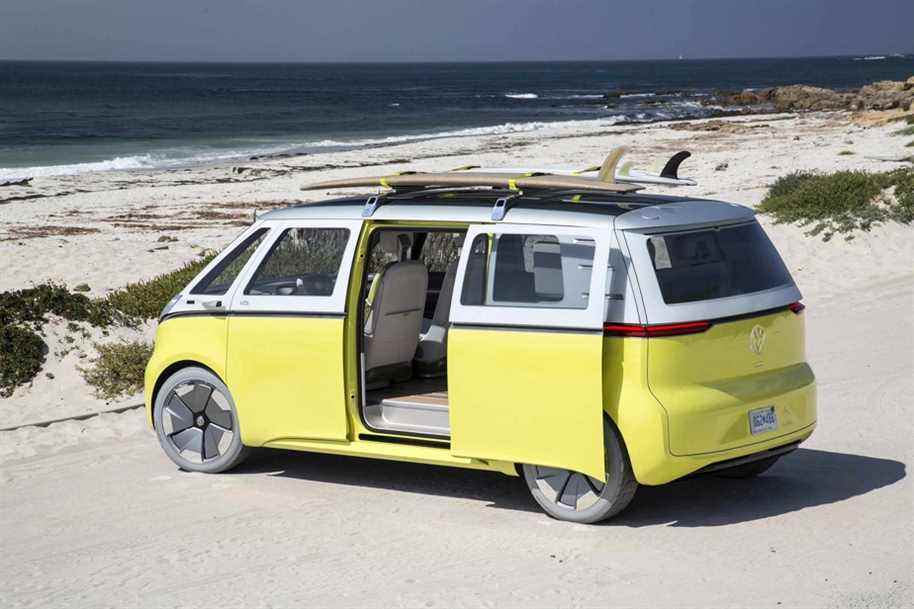(Frankfurt) Symbol of freedom and road trips without limits, the Volkswagen Combi is back: the German brand unveils an electric version of its legendary minivan hoping to seduce the green generation, and why not fans of historic models.
Posted at 9:33 a.m.
The manufacturer presents Wednesday evening this new vehicle called “ID. Buzz”, a member of the “ID” family, the flagship electric range in which Volkswagen is investing tens of billions of euros.
Bringing this “icon” back to life was “a priority” for boss Herbert Diess, he recently assured the online forum Reddit.
Borrowing the round shapes of the first models that made the glory of the minibus in the 1960s and 1970s, this electric version “embodies the turning point of Volkswagen”, judges Ferdinand Dudenhöffer, expert in the German automotive sector.
In addition to the passenger model which “serves the image” of the brand, VW will present the utility version of the van: a “particularly important” model which represents “a larger market”, according to Mr. Dudenhöffer.
“Climate crisis hippies”
The rear-engined van was born from the inspiration of a Dutch importer, Ben Pon. During a visit to the headquarters of Volkswagen, in Wolfsburg, in 1947, he noticed a vehicle cobbled together by factory workers to load equipment.
Seduced, he draws a sketch from it and ends up convincing VW, which starts mass production in March 1950, thus creating the second model in the young history of the group after the Beetle.
The chubby van, a symbol of the freedom to think and travel, has had particular success in the United States, where it has established itself in particular thanks to Californian surfers.
“Mysterious machine” in which the Scoubidou cartoon team moves, omnipresent in the hit American film Little Miss Sunshinethe Combi even had the honors of the cartoon Cars from Pixar, where he is represented as a car…hippie.
Volkswagen wants to make the myth bear fruit: the Combi which “contributed to write the history of the Flower Power movement” becomes with this ID. Buzz “a car for the Fridays for future generation”, “the hippies of the climate crisis”, judges Mr. Dudenhöffer.
other adventures
It remains to convince fans of old “Bulli” – the small name of the Combi in German – among whom the electric version of the van is talking.
The ID. Buzz “has taken up the V-shape of the T1 a bit”, the first model of the famous bus, notes Mélanie Wolf, 33, member of a club of enthusiasts in Bavaria.
With her companion Tobias Toplak, 43, she travels regularly in a Combi camper version from 1973 – as for a tour of Norway in 2019.
“I’m curious to see how Volkswagen will bridge the big gap between the spirit of the Bulli and the hipster world,” Tobias quips.
This spirit is above all “the feeling of freedom, independence”, as many values in his eyes undermined by the limited autonomy of electrical technology and dependence on a charging network.
In the absence of official figures from the manufacturer, the autonomy of the ID. Buzz was estimated to have nearly 400 km in a test by German auto club Adac.
“In the most beautiful places, in the middle of nowhere, where you spend a night, there will not even be a charging station in 20 years”, exclaims Roland Gräbner, 52, proud owner of four buses, including a T3 from 1986 with which “we have already crossed Europe”.
The old Combi “is just so flexible”, adds his partner Britta Kellermann, even if she finds the idea of an electric minibus “exciting”.
With ID. Buzz, concludes Hans Toma, 62 and owner of a 1978 “T2”, “the adventures will certainly be different”.
